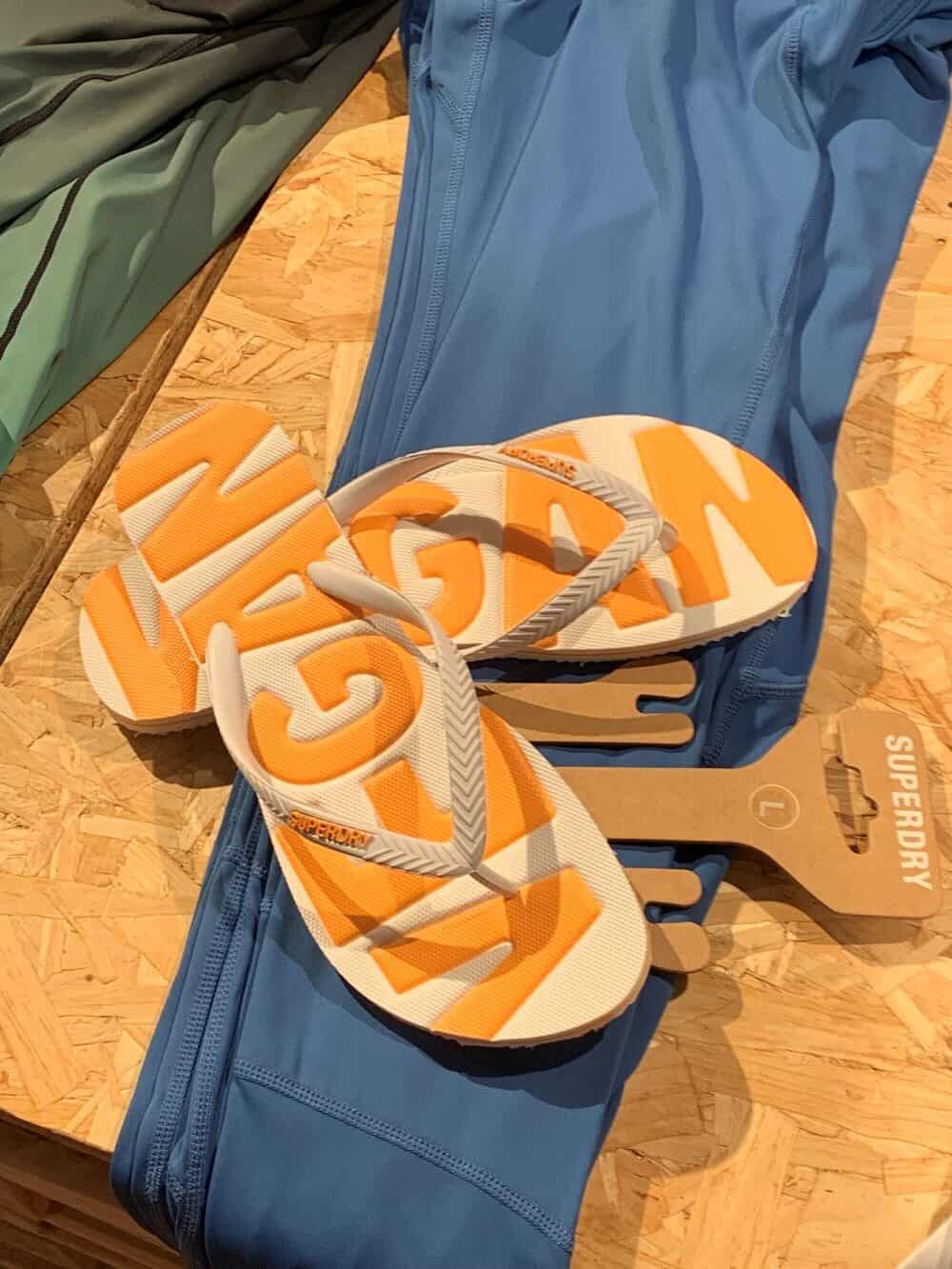Frustrated With Fast Fashion’s Facade? Here’s Some Sustainable and Affordable Alternatives
You like your clothes, huh?
You thrive on expressing yourself through their layers.
You love the feeling of a new outfit against your skin.
You’re frustrated with the fashion world’s facade and can see the filth beneath the greenwashing.
It’s likely you already know what fast fashion chains are and their common practices, but just in case, here’s a quick rundown of their predominant characteristics:
- Manufacture in developing countries with cheap labour
- Fast and frequent changing of styles to meet the latest trends
- Low prices
- Low-quality, unsustainable materials (such as polyester) that degrade after just a few wears.
What’s the problem?
As fashion trends change faster than the British weather – and outfit repeating has become fashion’s biggest faux pas – the net result has been the encouragement of a toxic consumer and throw-away culture.
And I get it, I love a new outfit too.
But that t-shirt you’re wearing comes attached with a big list of pollutants generated in the production process, and this will vary depending on material and place of production.
A cotton t-shirt demands a lot of energy to grow, manufacture and transport: 7kg of CO2 equivalent on average (Carbonfact, 2022) and 2,700 litres of water (Batt, 2022), which is enough to keep you hydrated for nearly three years!
Has it been dyed? Fabric dying and treatment practices generate about 20 percent of the world’s wastewater (Bandera, 2022), making the fashion industry one of the most significant polluters of clean water globally.
The pumping of toxic dyes and chemicals into waterways, including oil, phenol, pesticides and heavy metals, such as copper, mercury and chromium (Bandera, 2023), not only renders the water undrinkable and uninhabitable for wildlife, but also affects the food chain, via aquatic life and our crops.
It’s a big problem. Huge. We haven’t even discussed what happens when you don’t want to wear that t-shirt anymore, and let’s not forget that so far, these statistics concern a cotton t-shirt!
We’ve got 99 problems and these guys ain’t solving 1…
Most fast fashion apparel is made from synthetic materials, particularly polyester, which will take at least 200 years to decompose in landfill, and all the while, leaches the previously mentioned chemicals into soil and groundwater. Or the alternative – burning – releases carbon into the atmosphere.
But aren’t some fast fashion brands changing their ways? Is a ‘more sustainable’ collection enough to negate the damaging impact of the rest of their supply chain? And just to add, no, a coat made of a cotton and polyester blend cannot be recycled.
Note the phrase ‘more sustainable’. This is problematic as it directs business away from brands with a genuine ethics-driven model.
And what about those green boxes you see in stores claiming they want to ‘close the loop’ and promise to give the clothes you donate a new lease of life?
A recent investigation involving the concealment of a tracker in 21 items from 10 brands,, found that ‘76% (of the donated items) were either destroyed, left in warehouses or exported to Africa, where up to half of used clothing is quickly shredded for other uses or dumped’ (Changing Markets Foundation, 2023).
They reported that while several were sold as second-hand clothing, only one was resold in the same country where it was dropped off.
An undeniable reality of fast fashion is that the scale of production can never be sustainable; significantly more clothes are produced than actually needed.
As an example, Zara produces 450 million garments annually and 20,000 new styles each year! (Live Frankly, 2023).
OK. Breathe.
Some solutions
You’re here because you want environmentally-conscious and ethics-driven clothing brands that actually deliver on their statements of commitment…and more often than not, sustainable fashion comes with an undesirable price tag that puts it beyond many people’s reach.
So. Here’s a little list of some more affordable brands which really do care and are trying to make a difference:
- Pact
Offering a variety of practical and comfortable women’s and men’s apparel, they’re carbon neutral, fair trade, and use only organic cotton.
They say, ‘we don’t just claim sustainability, we certify it’, and it looks like they actually mean it!
They even inform their shoppers on each product’s environmental and social impact, so you can make decisions as a conscious consumer.
- OMNES
Here’s a climate positive brand which has a generous offering of styles from casual to occasion wear. While they’re not perfect (well, who is?) they’ve acquired and are on their way to some pretty decent sustainability credentials.
You can shop by material, too!
- Yes Friends
Bristol-born and headed by two women, this fun brand offers ethical products at amazingly affordable prices for both men and women. For example, a cute and casual t-shirt made from 100% fairtrade and organic cotton is manufactured in a solar powered factory and is only £12!
How do they retail at such low prices? They buy in big quantities and cut out the middleman by selling directly to the consumer.
- Rapanui
This brand showcases how we tackle the excessive production of fashion by printing in real time; ‘we only make what people need when they need it.’
Worn-out Rapanui products are encouraged to be sent back to them (free post returns and money off your next purchase), which they then process and blend into new organic yarn and transform into brand new products. That’s how you close the loop.
You’ll find a stylish assortment of clothing here and you can even design your own organic tees!
5. This Is Unfolded
These guys send nothing to landfill! Zero! Zilch!
And they create around 20 products every couple of months, instead of hundreds.
With fair wages for their workers and sleek designs for you, this brand has made commitments to planet and people. Take a peek at this gorgeous green floral skirt made from 100% ecovero sustainable viscose at £31.
The Solution?
People and the planet desperately need more slow fashion and circularity.
By supporting brands like these and spreading the word, you’ll be helping to push the transition.
Please reuse, repurpose and buy second-hand where possible, and importantly, to approach this with a lens that focuses more on style, rather than trends. If you’ve got to buy new, invest in products made from natural and durable materials.
It’s as simple as this: We can educate one another on spotting greenwashing and supporting sustainable business practices. We need to make the collective decision to stop buying into the toxic throw-away culture of trends and to stop buying toxic products.
Written by Molly Ann Burnell

References:
Bandera, Gerardo, How the Fashion Industry Pollutes Our Water, (Fair Planet, 2022), <https://www.fairplanet.org/story/how-the-fashion-industry-pollutes-our-water/> [accessed 26th July 2023].
Batt, Esther, Flaws in Fast Fashion: the Atacama Desert Dumping Ground, (UCL Institute for Sustainable Resources, 2022), <https://www.ucl.ac.uk/bartlett/sustainable/news/2022/apr/flaws-fast-fashion-atacama-desert-dumping-ground> [accessed 27 July 2023].
Carbonfact, How Much Carbon is a T-shirt? (2022), <https://www.carbonfact.com/blog/tshirt#:~:text=A%20t%2Dshirt%20is%207%20kg%20of%20CO2%20equivalent%20on%20average.&text=The%20average%20carbon%20footprint%20of,in%20India%20(10%20kgCO2e)> [accessed 26 July 2023].
Changing Markets Foundation, Take-back Trickery, (2023), <http://changingmarkets.org/wp-content/uploads/2023/07/Take-Back-Trickery-Compressed.pdf> [accessed 26 July 2023].
Live Frankly Team, How Sustainable is Zara and Can I Shop There With a Clean Conscience? (London: Live Frankly, 2023), <https://livefrankly.co.uk/sustainable-fashion/how-sustainable-is-zara-and-can-i-shop-there-with-a-clean-conscience/> [accessed 28 July 2023].
National Geographic, ‘How Your T-Shirt Can Make a Difference’, Youtube, 2013. <https://www.youtube.com/watch?v=xEExMcjSkwA> [accessed 26 July 2023].




